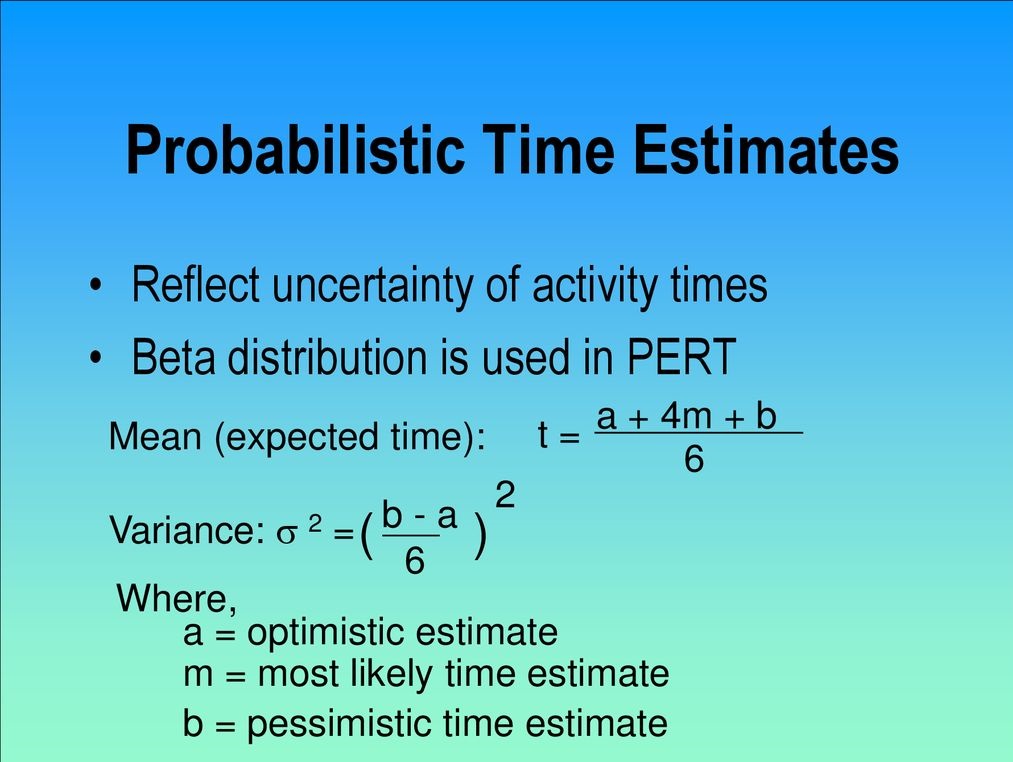
Project management is a multifaceted domain that requires meticulous planning, execution, monitoring, and control. One of the critical techniques that have made significant contributions to the field is the Program Evaluation and Review Technique (PERT). Developed during the 1950s, PERT aids managers in scheduling, organizing, and coordinating tasks within projects. This article delves deep into the origins, principles, and applications of PERT.
Historical Background
The PERT technique was developed in the late 1950s by the U.S. Navy, during the creation of the Polaris missile project. Their objective was to fast-track the U.S. nuclear deterrent capabilities. Given the complexity and the sheer magnitude of the project, there was a need for a revolutionary method to manage it, leading to the birth of PERT.
Basic Principles
- Network Diagrams: At its core, PERT is based on a network diagram that represents a project’s tasks and milestones. These diagrams showcase the interdependencies between tasks, helping managers visualize the project’s flow.
- Events and Activities: In a PERT diagram, events (or milestones) are depicted as nodes, while activities (or tasks) that lead up to these milestones are represented as arrows. Events are passive elements where no resources are consumed, while activities consume time and resources.
- Critical Path: One of the most distinguishing features of PERT is its focus on the ‘critical path’ – the longest path through the project with the least amount of slack. This path determines the project’s minimum completion time.
- Probabilistic Time Estimates: PERT, being probabilistic in nature, requires three time estimates for each activity:
- Optimistic Time (o): The shortest time in which the activity can be completed.
- Most Likely Time (m): The completion time having the highest probability.
- Pessimistic Time (p): The longest time the activity might take, considering potential challenges.
- Slack Time: This is the total time that you can delay a task without delaying the project.
Steps Involved in PERT
- Identify Specific Activities and Milestones: The first step is to list all activities and milestones that the project encompasses.
- Determine the Sequence of Activities: Once all tasks are listed, the next step is to understand the order in which they need to be executed.
- Construct a Network Diagram: Using the activities, their sequence, and interdependencies, a network diagram is created.
- Estimate Time for Each Activity: As mentioned earlier, three-time estimates are made for each activity. Based on these, an expected time (TE) for each activity can be calculated using the formula:TE = (O + 4M + P) / 6″O” :The optimistic estimate is the shortest possible time that the task could take.
“P” :The pessimistic estimate is the longest possible time that the task could take.
“M”: The most likely estimate is the time that is most likely for the task to take. - Identify the Critical Path: Once all expected times are calculated, the critical path can be identified by determining the longest path in the network diagram.
- Update PERT Diagram: As the project progresses and real-world data becomes available, the PERT diagram should be updated to reflect the current state of the project.
Advantages of PERT
- Visualization: PERT provides a visual representation of the project, making it easier for stakeholders to understand the project flow.
- Focus on Critical Tasks: By highlighting the critical path, PERT ensures that managers focus on tasks that are crucial for timely project completion.
- Optimal Resource Allocation: Knowing the critical path also aids in optimal resource allocation.
- Flexibility: The probabilistic nature of PERT allows managers to consider uncertainties and variabilities in the project.
Limitations of PERT
- Subjectivity: The probabilistic time estimates can be subjective and might not always reflect the real-world scenario.
- Complexity: For large projects, PERT diagrams can become overly complex and difficult to interpret.
- Assumption of Independence: PERT assumes that individual tasks are independent, which might not always be the case.
Summery
The Program Evaluation and Review Technique (PERT) is a robust tool in the project manager’s arsenal. While it has its limitations, its strengths in visualizing project tasks, highlighting the critical path, and accounting for uncertainties make it invaluable for complex projects. Whether used alone or in conjunction with other project management techniques, PERT remains a testament to the importance of structured planning and review in achieving project success.